I know I probably say this in every one of my Tool posts, but I’m constantly amazed by the breadth of work that’s out there from developers who are making independent tools.
Just when you think you’ve seen it all a new take on “how to be creative on your computer” surfaces, and you fall in love with it all over again.
I’ve written these tool roundups so much that I started a “Tools” category, and my Cool Tools itch curation keeps growing. I didn’t think this is something you could keep up for so long. Tools are a generous space.
When you browse collections like my Cool Tools list, you may notice quite a number of game development tools on there. These are tools like Fantasy Consoles (Bitsy being a popular example), or very small personal projects like KAdventure (an adventure game engine for the Sega Genesis / Mega Drive), Tuesday Visual Novel Engine (a simple web-based, free and open-source visual novel editor that can be used in a web browser), G Develop (a free and open-source, cross-platform 2D game development tool)… The list goes on. Each of these is wonderful and provides a fascinating point-of-view on what it means to make a game.
– Bitsy by Adam Le Doux
“~ a little editor for little games or worlds ~”
In many ways… what a game is, what it means to be in a virtual space, what it means to actualize all these concepts… starts with the tool. Tools inform these ideas too. When you explore the tool space, you come away with a whole new appreciation for games.
RPG in a Box is one that’s stood out to me lately.
I mean… a while ago I added it to the Cool Tools list, and got emailed about it, which inspired me to really check it out. I’m amazed by it. It is in early access on Steam. Don’t sleep on this!
I’m writing this post inspired by the work being done on it, and I hope that more people will check it out!
Itch link: https://zeromatrix.itch.io/rpginabox
Steam link: https://store.steampowered.com/app/498310/RPG_in_a_Box/
– RPG in a Box’s Voxel Editor
RPG in a Box is a 3D grid-based tool for making voxel-style games. If you don’t know what that is then think Minecraft, but as an actual versatile development tool with many features. It’s very flexible.
The various work from the RPG in a Box community is inspiring. For example, A Road to Awe was made with it.
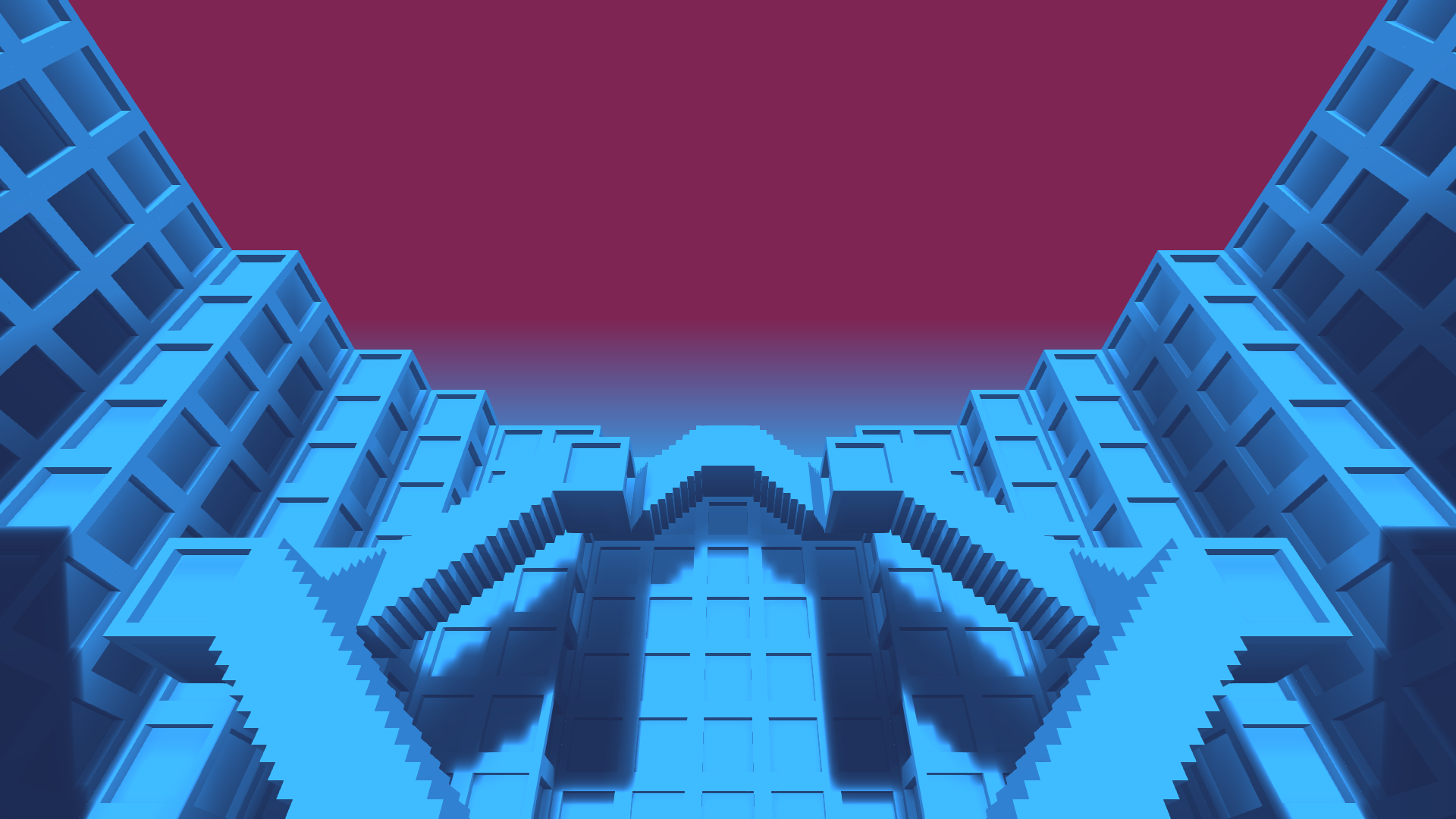
– A Road to Awe by lectronice
“A Road to Awe is a kind of intimate year-long game jam, with a focus on level design and ambient music. The game itself offers a contemplative first-person experience. You simply walk the road, one day at a time, wondering what comes next.”
The RPG in a Box community game showcase has many more offerings demonstrating the tools flexibility.
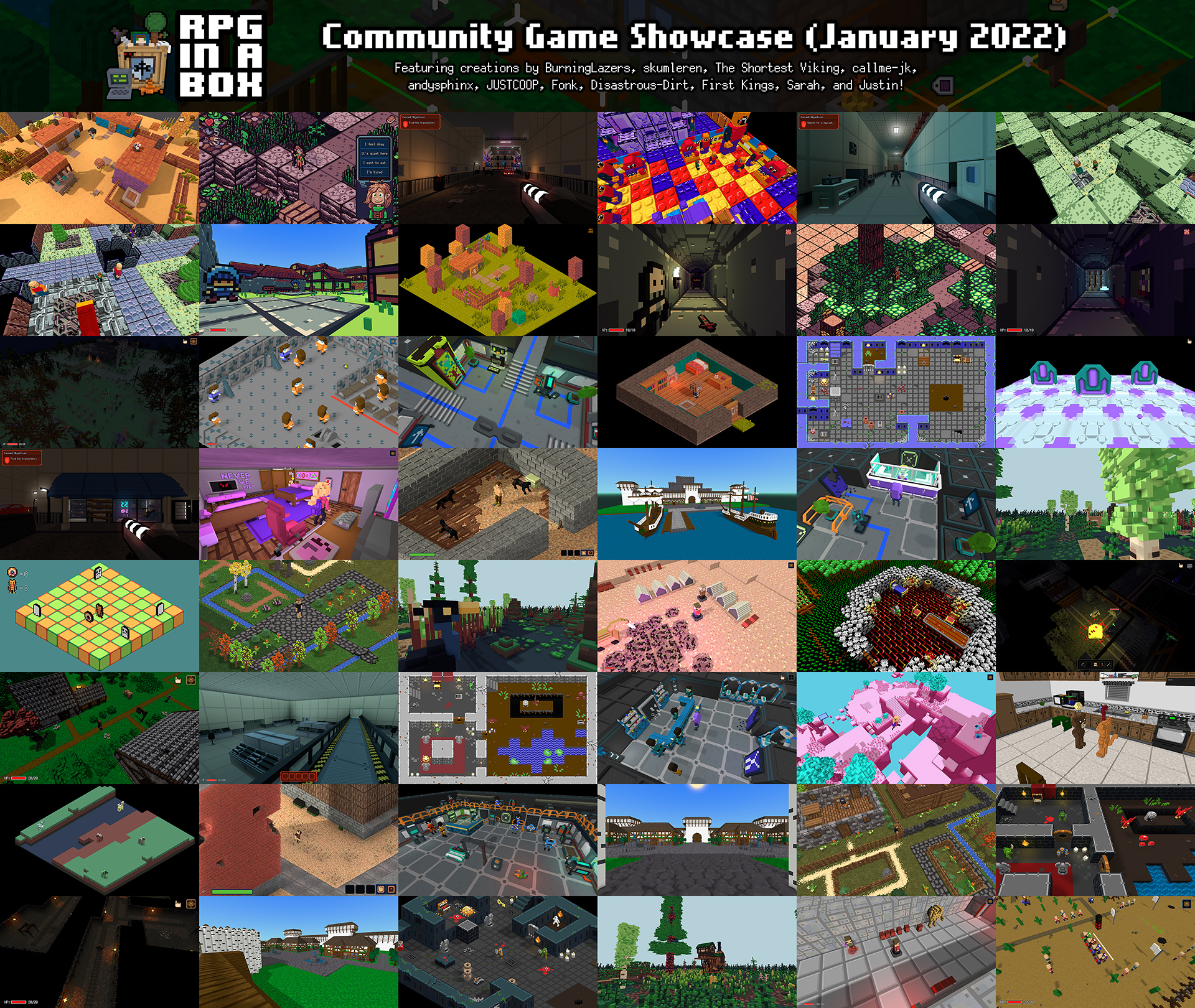
– The Community Game Showcase
RPG in a Box is a wonderful distillation of a pixel art tool translated into a 3D sense. You can make your own art entirely in it, using the Voxel Editor.
You can manage assets. Easily build dialogue with the Dialogue Editor. Design your maps… There’s a Combat Editor, Item Editor… My first impression of it was being overwhelmed by all the generous features. I don’t mean that in a bad way. The tool is very approachable. I could see myself using this to extend my own existing workflow too. For example, my favorite: It lets you generate sound FX with a handy Sound FX Generator!
– The Sound FX Generator
RPG in a Box’s Sound FX Generator is a simple tool that lets you quickly generate (and export) cute little video game sound FX. You can export them as .wav.
RPG in a Box makes all these things so ridiculously simple, it’s a wonderful tool to get to know. Even if you are making more “advanced” games, it has these unique offerings that could easily come in handy.
– RPG in a Box’s Map Editor
For example, I sometimes tell people that Bitsy is a great tool for mocking up maps and environments. You can plan your elaborate 3D worlds with something like Bitsy. It’s better than using post-it notes or paper… to see how your various environments can work together.
Aside from just making a game in it, I feel like you could easily find similar use for RPG in a Box. I mean… there’s a handy Dialogue Editor. Maybe I don’t need to buy fancy narrative design software just yet. :)
And aside from all that, RPG in a Box’s versatility offers a refreshing take on what building a game should be like.
I probably sound like a broken record because I say this so often when I talk about tools… but each one of these offers something unique.
We sometimes act like it’s a downside when games made with certain tools look so heavily specific to that tool. For example, when people complain that all Unity games look the same. Bitsy games certainly have a recognizable look… but that is precisely what makes each of these so valuable.
When you work in a hyper specific game development environment you are encouraged to look at game development in a brand new way… often in a way that you might not even have considered. Often the restrictions of the tool are where the most interesting ideas come from. New popular genres or ideas can be a reaction to breaking constraints.
I like to think that the player is tasked with mastering the rules and restrictions of the game. The game developer is tasked with learning the rules and restrictions of the tool, in order to defy those restrictions.
Whenever you enter a new development environment it can feel like you are re-learning how to re-invent the wheel. Being really good at game design is to understand how tools inform your creative decisions.
The more environments you familiarize yourself with, the more aware of this you become.
– Castle Game Engine, an open-source cross-platform game engine for 3D and 2D games.
Game development tools and environments are often love letters to certain genres. For example, see Adventuron Classroom, which grew out of the author’s passion for text adventures, and urge to introduce text adventure literacy… Keeping the genre alive.
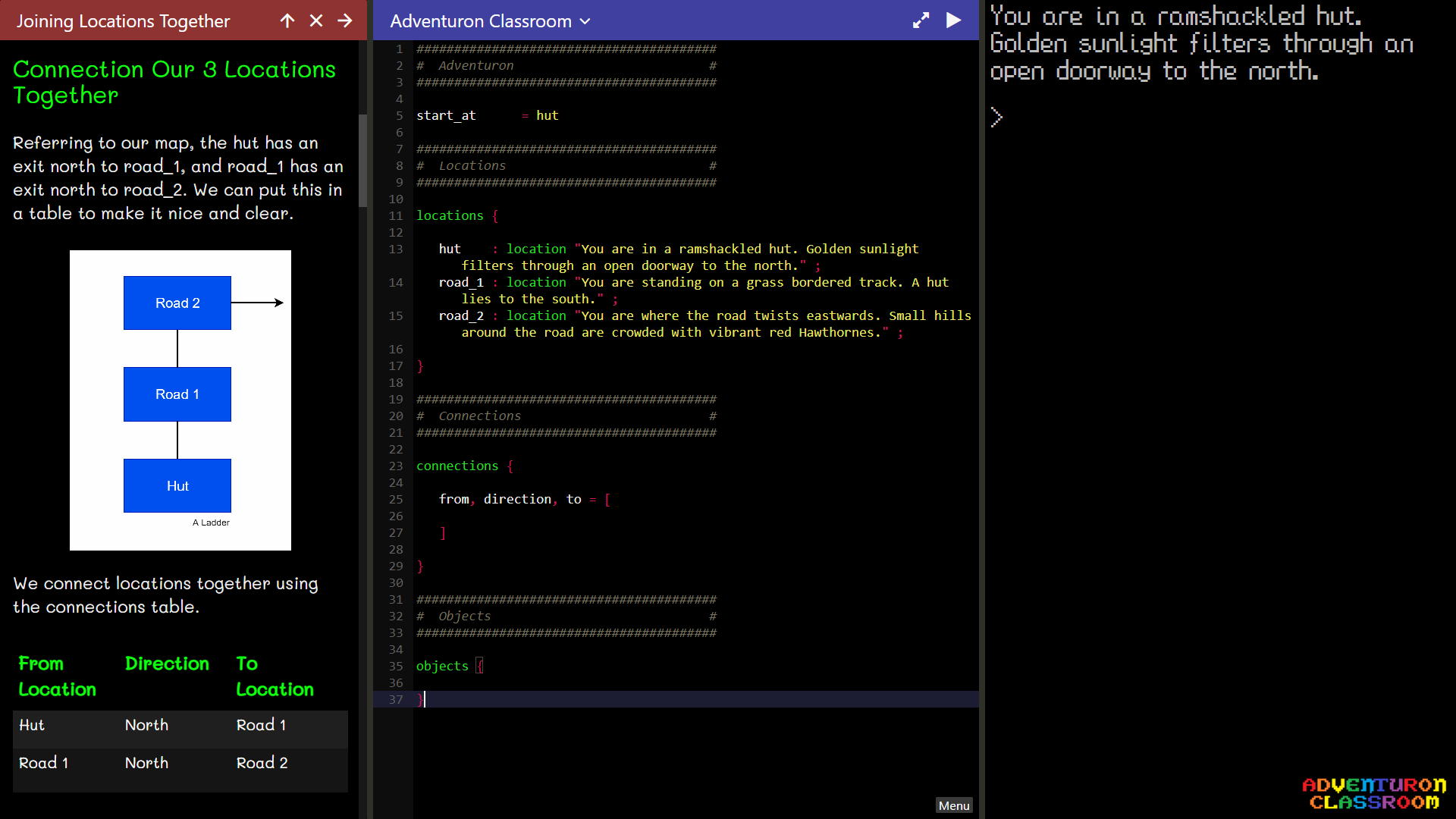
– Adventuron Classroom by Chris Ainsley
“What is old is new again. Look past the aesthetics, and you are left with a medium where it is deliciously easy to go from imagination to constructed reality. The adventures of the next generation are out there, ready to be travel from mind to keyboard. Lowering the very first step is the way.”
– Chris Ainsley / Adventuron Software Limited.
Every game development environment out there (ranging from Unreal to Pico-8) grew out of preferences to certain use-cases, strengths, artistic styles, or genres… No two are ever alike.
Each of these environments specialize in something.
My own favorite out of all this is that each one lets you look at game design (or development) through a unique lens.
I love that you often have five different ways of accomplishing the same task in Unreal. The tool’s leanings, how it was informed by the needs of its community, is what gives each a unique culture.
Making a Bitsy game means that you will be looking at game design through a Bitsy lens. If you try Adventuron.io then you will be thinking, building, or designing through the lense of an adventure game.
https://t.co/C7pxEOecIq 0.3.2 is out finally!
Rogue Engine gives you a Unity-like environment for @threejs
This one took a bit longer but now we have auto-updates!!#webdev #javascript #typescript https://t.co/LzhgNX88Nh
— P. Martin Ortiz (BeardScript) (@BeardScript) December 14, 2021
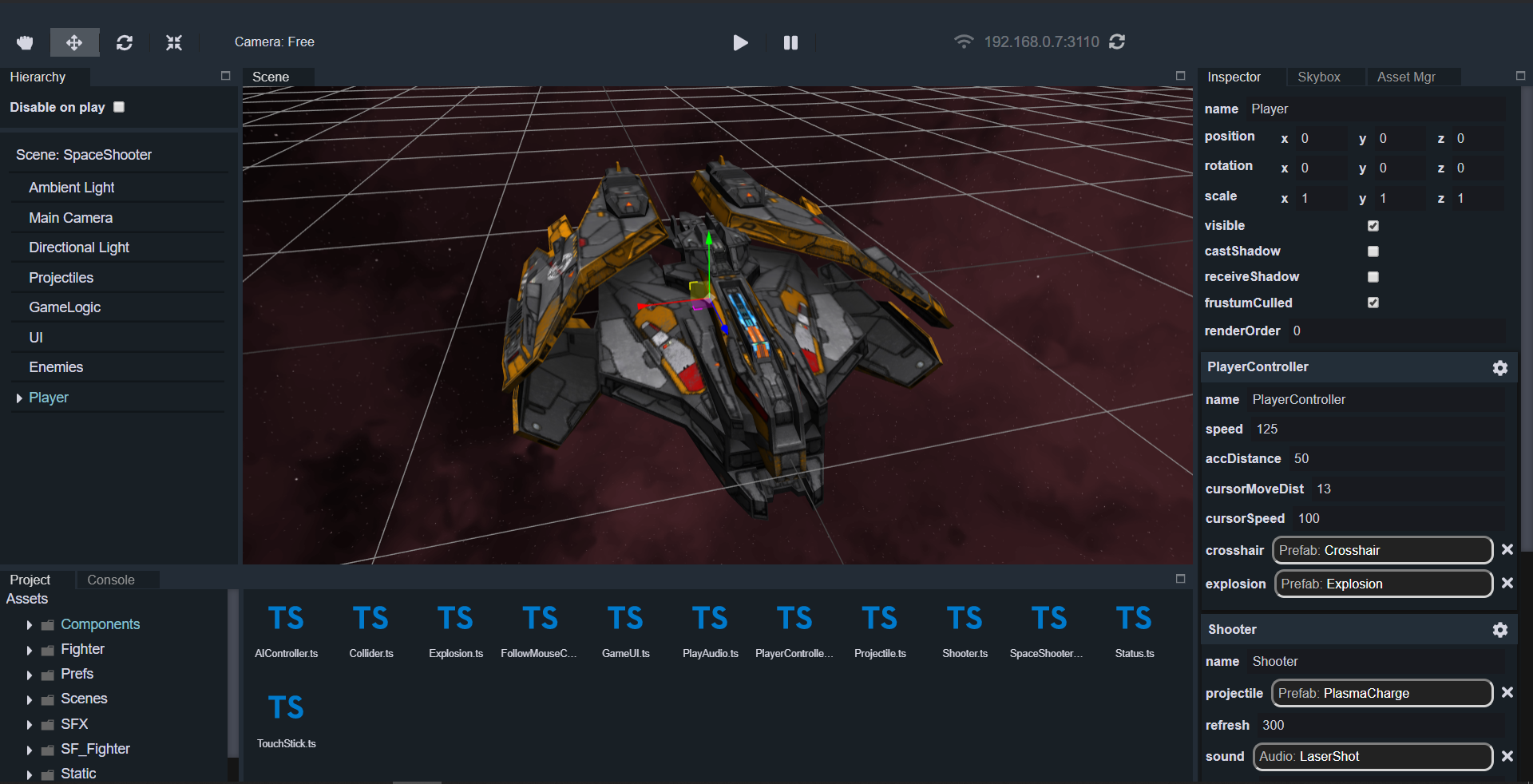
– Rogue Engine by Beardscript
“An extendible editor for making web games. With a number of impressive features such as being component based, an asset manager, and in-editor marketplace…”
I posted about Rogue Engine before. It’s wonderful and I haven’t made enough noise about it!
Every tool, even if it’s something as mainstream as Unreal, let you approach making a game in their own way. The more you try out, the more they help you become a better designer. A good game is just as informed by the tools you use, as it is by the people who design it. If you try extending your own literacy about game development tools you start seeing past the tools. You don’t just think in terms of solving problems in Unity. It’s easy to form lazy design habits when you’re used to just one workflow.
Working against the grain of what something is built to do is where unique work happens.
It’s as much about working against the system that you are in, as it is about the system informing your creative decisions.
Any game you make is a collaboration between you, the computer, and the software you use…
This is what I think makes digital art so fascinating. All the trappings, malfunctions, system restrictions, compromises, development environments… kind of contribute to this very unique creative landscape. The tools we use also shape our popular aesthetics and design trends.
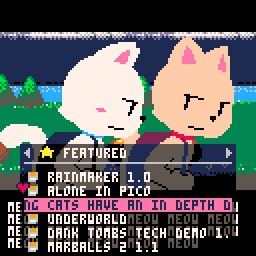
– Pico-8
“Play, create and share tiny games and other cartridges!”
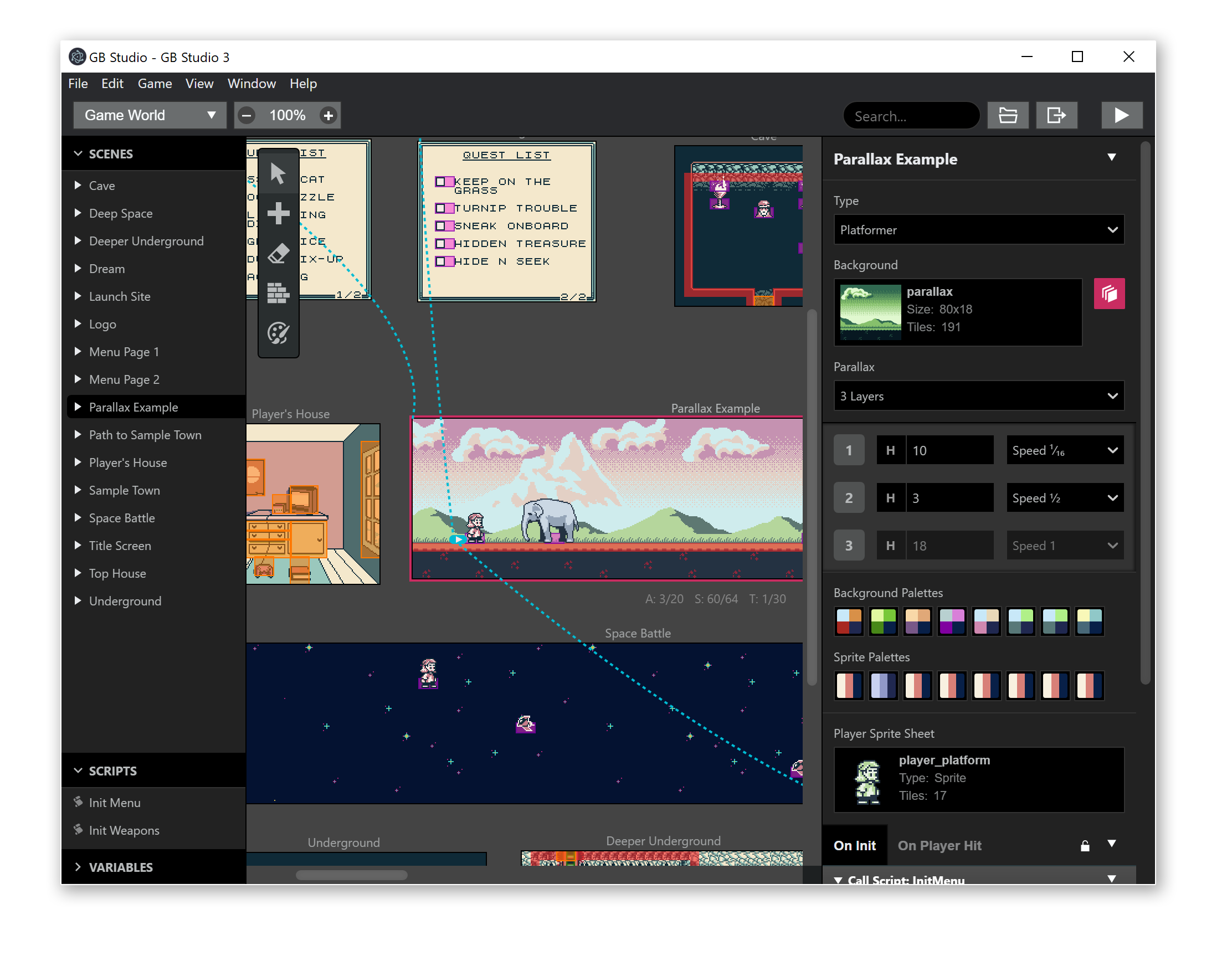
– GB Studio
“A quick and easy to use drag and drop retro game creator for your favourite handheld video game system.”
I would love for things to come to a point where tool developers are just as recognized and celebrated as game designers are! Who knows… maybe in the future game festivals, outlets… will show as much love to tools like RPG in a Box as the games made in it deserve to be recognized.

– Also see Godot, which needs not introduction…
Other exciting projects:
I've been busy building a 3D modeling tool for the browser.
It won't be the most powerful but it is dead-simple and lighting fast to sketch-out ideas with.
Stay tuned for a pre-alpha soon!#screenshotsaturday #gamedev #rustlang pic.twitter.com/gKh51k3Znr
— Ian Kettlewell (@kettlecorn) February 19, 2022
I am delighted to announce that Homer is now live: https://t.co/o5jQ2yyPAm — a web-based solution for designing and writing interactive narrative content.
— pietro peterpunk skinny legend rolling polsinelli (@ppolsinelli) February 21, 2022
? Working on this 3D rendering thing for @aseprite
It uses Aseprite's Tileset feature and renders each tile as a 3D cube. Layers stack on each other, so you can build 3D stuff using it#screenshotsaturday #pixelart pic.twitter.com/hSkr9yBTzn
— Kam (@darkwark) February 19, 2022
Grab our free demo now for #SteamNextFest! pic.twitter.com/vYyqJ5ZVrr
— ? Mini Maker: Make A Thing ? (@minimakergame) February 22, 2022
Sky Creator 1.20 is finally released with solid new features and various improvements!https://t.co/hBtXyWzjoy#UnrealEngine #gamedev #rain #snow #vfx pic.twitter.com/QNudC2n02z
— Dmitry Karpukhin (@skx_doom) January 25, 2022
Unreal Engine 5 is now available in Preview!
Building upon last year’s Early Access offering, Preview 1 includes improvements to performance, quality, and feature-completeness across the board. Read the full list of new updates here: https://t.co/VYngRpcXCh #UE5
— Unreal Engine (@UnrealEngine) February 22, 2022
(…Included this last one because I’ve been heavily into Unreal lately, and I’m excited about this newest release :)
If you’ve enjoyed this post, check out some of my other writing on tools. There’s lots to discover!

1 Response
[…] “RPG In A Box” is a cool tool! (an alternative game development curation) […]